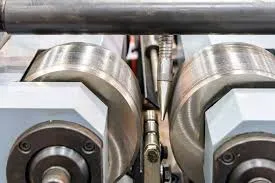
-
 Afrikaans
Afrikaans -
 Albanian
Albanian -
 Amharic
Amharic -
 Arabic
Arabic -
 Armenian
Armenian -
 Azerbaijani
Azerbaijani -
 Basque
Basque -
 Belarusian
Belarusian -
 Bengali
Bengali -
 Bosnian
Bosnian -
 Bulgarian
Bulgarian -
 Catalan
Catalan -
 Cebuano
Cebuano -
 Corsican
Corsican -
 Croatian
Croatian -
 Czech
Czech -
 Danish
Danish -
 Dutch
Dutch -
 English
English -
 Esperanto
Esperanto -
 Estonian
Estonian -
 Finnish
Finnish -
 French
French -
 Frisian
Frisian -
 Galician
Galician -
 Georgian
Georgian -
 German
German -
 Greek
Greek -
 Gujarati
Gujarati -
 Haitian Creole
Haitian Creole -
 hausa
hausa -
 hawaiian
hawaiian -
 Hebrew
Hebrew -
 Hindi
Hindi -
 Miao
Miao -
 Hungarian
Hungarian -
 Icelandic
Icelandic -
 igbo
igbo -
 Indonesian
Indonesian -
 irish
irish -
 Italian
Italian -
 Japanese
Japanese -
 Javanese
Javanese -
 Kannada
Kannada -
 kazakh
kazakh -
 Khmer
Khmer -
 Rwandese
Rwandese -
 Korean
Korean -
 Kurdish
Kurdish -
 Kyrgyz
Kyrgyz -
 Lao
Lao -
 Latin
Latin -
 Latvian
Latvian -
 Lithuanian
Lithuanian -
 Luxembourgish
Luxembourgish -
 Macedonian
Macedonian -
 Malgashi
Malgashi -
 Malay
Malay -
 Malayalam
Malayalam -
 Maltese
Maltese -
 Maori
Maori -
 Marathi
Marathi -
 Mongolian
Mongolian -
 Myanmar
Myanmar -
 Nepali
Nepali -
 Norwegian
Norwegian -
 Norwegian
Norwegian -
 Occitan
Occitan -
 Pashto
Pashto -
 Persian
Persian -
 Polish
Polish -
 Portuguese
Portuguese -
 Punjabi
Punjabi -
 Romanian
Romanian -
 Russian
Russian -
 Samoan
Samoan -
 Scottish Gaelic
Scottish Gaelic -
 Serbian
Serbian -
 Sesotho
Sesotho -
 Shona
Shona -
 Sindhi
Sindhi -
 Sinhala
Sinhala -
 Slovak
Slovak -
 Slovenian
Slovenian -
 Somali
Somali -
 Spanish
Spanish -
 Sundanese
Sundanese -
 Swahili
Swahili -
 Swedish
Swedish -
 Tagalog
Tagalog -
 Tajik
Tajik -
 Tamil
Tamil -
 Tatar
Tatar -
 Telugu
Telugu -
 Thai
Thai -
 Turkish
Turkish -
 Turkmen
Turkmen -
 Ukrainian
Ukrainian -
 Urdu
Urdu -
 Uighur
Uighur -
 Uzbek
Uzbek -
 Vietnamese
Vietnamese -
 Welsh
Welsh -
 Bantu
Bantu -
 Yiddish
Yiddish -
 Yoruba
Yoruba -
 Zulu
Zulu
High-Performance Thread Rolling Tools for Precision Manufacturing Applications
Understanding Thread Rolling Tool Products An Overview
Thread rolling is a widely used manufacturing process that transforms a variety of materials into perfectly threaded components. The process is known for its efficiency and the superior quality of the finished products. This article delves into the essential aspects of thread rolling tool products, focusing on their types, applications, benefits, and maintenance.
1. What are Thread Rolling Tools?
Thread rolling tools are specialized implements designed to produce threaded surfaces on fasteners and other components through a cold forming process. Unlike traditional cutting methods, which remove material to create threads, thread rolling displaces the material. This technique leads to better mechanical properties, including greater strength and improved surface finish.
2. Types of Thread Rolling Tools
There are several types of thread rolling tools, each suited for specific applications. The most common types include
- Flat Die Thread Rollers These are used for manufacturing threads on cylindrical parts. They consist of two flat dies that come together to form the desired thread profile as the workpiece is rolled between them.
- Circular Thread Rollers Employing a circular die, this type is efficient for producing high-volume threaded parts. The workpiece is rotated against the circular die, allowing for a continuous threading process.
- Tapered Rollers Ideal for producing tapered threads, these tools allow for a gradual reduction in diameter, commonly used in applications like plumbing and gas fittings.
- Multistage Thread Rollers These are designed for complex threading patterns and can create multiple thread forms in a single pass. They are often used in the aerospace and automotive industries for specialized applications.
3. Applications of Thread Rolling Tools
Thread rolling tools find applications in various industries, including automotive, aerospace, electronics, and machinery. They are utilized to produce a wide array of components such as
- Bolts and Nuts High-strength fasteners are critical in many engineering applications, where thread rolling ensures uniformity and reliability.
- Screws From simple screws to specialized fastening components, thread rolling provides precision and durability.
- Parts for Machinery Many machines and equipment rely on threaded components to ensure effective assembly and operation
.thread rolling tool products

- Hydraulic and Pneumatic Systems Components in these systems often require finely threaded surfaces for secure connections, making thread rolling an ideal choice.
4. Benefits of Using Thread Rolling Tools
The thread rolling process offers numerous benefits over traditional machining methods, including
- Material Savings Since thread rolling displaces rather than removes material, it minimizes waste, leading to cost savings and sustainability.
- Enhanced Strength Cold working through thread rolling increases the tensile strength of the material, which is critical for components subjected to stress.
- Improved Surface Finish Thread rolled surfaces typically have a smoother finish compared to cut threads, reducing the need for secondary finishing processes.
- Increased Production Efficiency Thread rolling tools enable high-speed production, making them suitable for large-scale manufacturing environments.
5. Maintenance of Thread Rolling Tools
Proper maintenance of thread rolling tools is essential to ensure their longevity and performance. Here are some tips for maintaining these tools
- Regular Inspection Periodically check the rollers for wear and damage. Early identification of issues can prevent costly downtime.
- Cleanliness Keep the tools clean to avoid contamination that could affect the quality of the threaded components.
- Lubrication Ensure proper lubrication of the tools to reduce friction, which can lead to wear and overheating.
- Storage Store tools in a clean, dry environment to protect them from oxidation and other environmental factors.
Conclusion
Thread rolling tool products play a critical role in the manufacturing of threaded components across various industries. With the advantages of greater material efficiency, strength, and surface quality, this method continues to be favored by manufacturers. By understanding the types, applications, benefits, and maintenance of thread rolling tools, businesses can optimize their production processes and ensure high-quality results in their operations. Investing in the right tools and technology will help in maintaining a competitive edge in the fast-paced manufacturing landscape.
